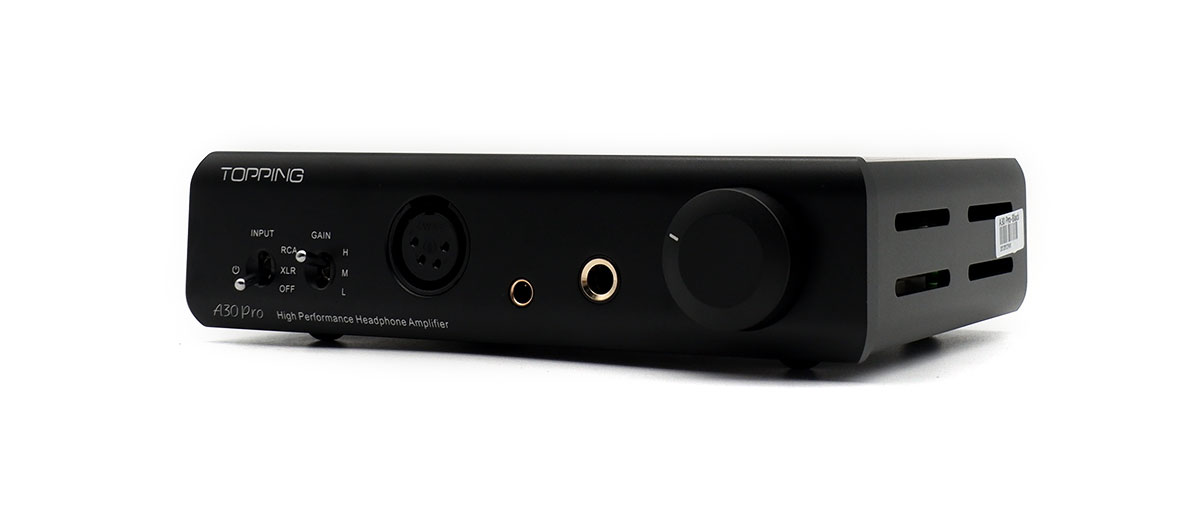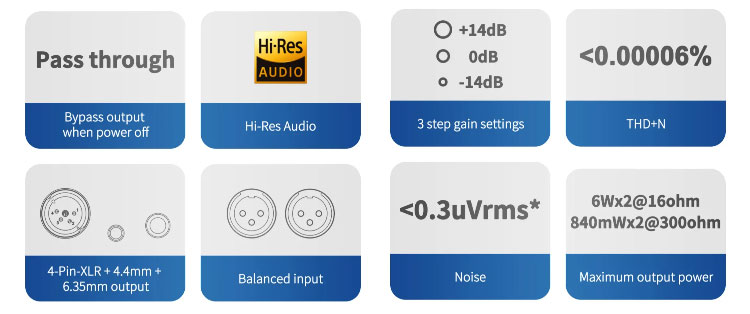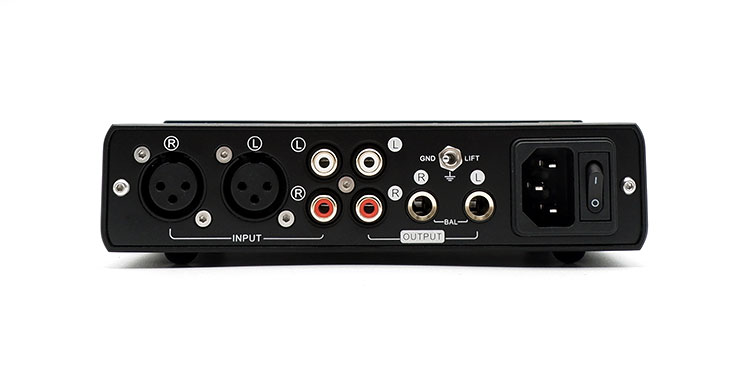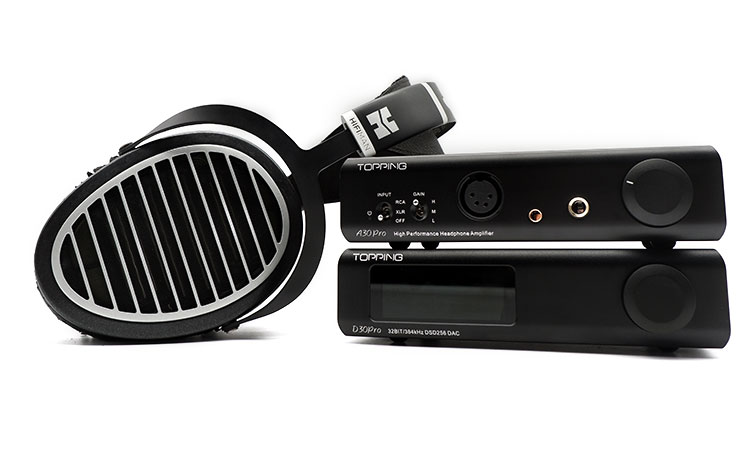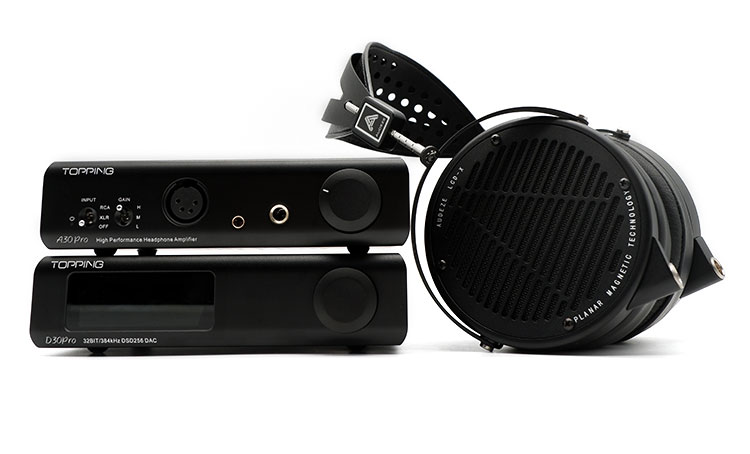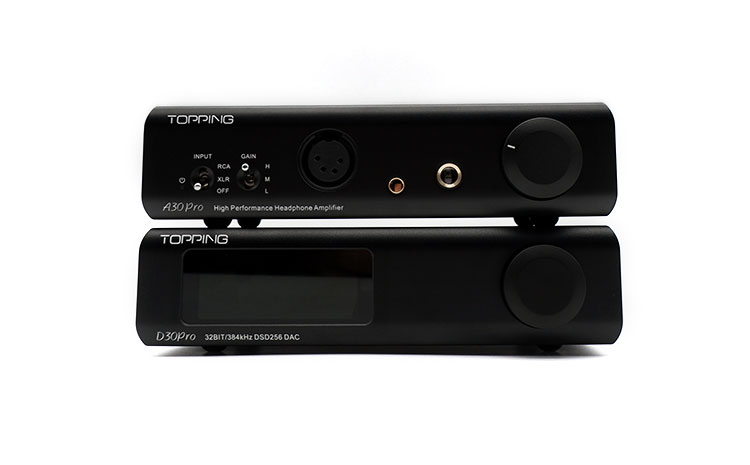The Topping A30 Pro is a compact desktop NFCA headphone amplifier offering up to 6W of output power into a 16Ω load. It is priced at $349.99
Disclaimer: The Topping A30 Pro sent to us is a sample in exchange for our honest opinion. We thank the team at Shenzhen Audio and Topping for giving us this opportunity.
To read more about Topping products we have reviewed on Headfonics click here.
Note, this 2-page review follows our new scoring guidelines for 2021 which you can read up on here.
Starting with the release of the THX 789 balanced amplifier a few years ago, many companies have decided to follow suit by releasing their version of an affordable balanced headphone amplifier. This has resulted in the release of THX-based amplifiers from SMSL, and some affordable chip-based amplifiers from Topping and Schiit Audio among others.
With Topping, they have been relying on their proprietary NFCA chip-based amplifiers to tackle the wave of affordable chip-based amplifiers that have been flooding the market. They have released an entry-level option in the L30, and a higher-end option in the A90, both of which have come across our office.
Recently though, Topping has talked to us about the release of their contender for a midrange solution that still utilizes their NFCA technology, while having options for balanced input and output ports.
Tech Highlights
The A30 Pro features Topping’s proprietary NFCA(Nested Feedback Composite Amplifier) technology. This particular implementation utilizes 10 pcs of OPA1656 op-amps. In conjunction with the UHGF (Ultra High Gain Feedback) topology, this ensures an ultra-low noise floor, where noise levels are recorded as just 0.3µV, which translates to a THD+N of 0.00006%.
Aside from noise mitigation, the NFCA circuit is optimized for use in a single-ended operation. Using the UHGF topology, the A30 Pro can produce a wide dynamic range, up to 145dB, which is beyond the thresholds of the dynamic range of human hearing.
Design
The A30 Pro chassis has the same dimensions as the chassis of the D30 Pro. Like the D30 Pro, it also comes in 2 colors, silver or black, and the one that was sent to us came in black.
The materials of the chassis are also practically the same, with the front fascia being made of hard plastic that perfectly matches the color of the powder-coated aluminum chassis.
However, what’s different about the chassis of the A30 Pro is that it has exhaust vents on the sides, and on top. Despite it being a chip-based headphone amp, it still heats up quite a bit due to the 10 op-amps inside the chassis, so the holes are there to ensure it can properly dissipate heat when necessary.
I/O
Inputs include both a single-ended RCA and a pair of 3-pin balanced XLRs. In the rear panel, there are 2 other pairs of outputs, which are pass-through outputs, not to be mistaken for pre-amp outputs.
The pass-through outputs are connected to its corresponding input, meaning RCA to RCA, and the ¼” balanced to the 3-pin XLR inputs.
While they are pass-through outputs, they are cut off when the headphone amp section is active, and only activated once the A30 Pro is switched to the off position. So this would work great with a setup that has both a headphone setup and active speakers since the headphones won’t be playing at the same time as the active speakers.
The front panel presents you with the 3 of the most popular output options. This includes a single-ended ¼” output, a 4.4mm pentaconn socket, and a 4-pin balanced XLR output. However, when listening through all 3 ports, there is no audible difference, since the balanced output terminals internally are connected to the single-ended output.
Interface
The front panel also has two 3-way toggle switches. The leftmost is a power switch that doubles as an input selector, so there’s off, XLR and RCA. Next to it is the gain switch, which allows for switching between 3 gain levels.
The potentiometer on the far-right side of the front is a standard potentiometer, which has a satisfyingly quick response. While at the lowest extreme of the volume potentiometer, there is some channel imbalance. However, this is offset by the 3 available gain levels that will ensure that any headphone’s optimal listening volume is well above the channel imbalance threshold.
At the rear of the device, there are 2 physical switches. The first one is a power switch that disconnects the amplifier from the mains power.
The second one is a ground or lift/switch, which can isolate the ground on the power circuit from the ground of the single-ended or balanced inputs. Isolating the ground of the A30 Pro can potentially eliminate any ground loop noise due to a different grounding potential of an upstream device.
Although the A30 Pro lacks a screen, the physical controls that are available end up being more convenient particularly with desktop setups. The more rudimentary tactile controls are easier to adjust quickly compared to volume knob-based interfaces.
Sound Impressions
Summary
I personally listen to a lot of vocal tracks, and listening to them through the A30 Pro is a pleasant experience. With fuller male vocals from artists like Andrea Bocelli, the A30 Pro translates the vocal range very well, where there is a mostly accurate presentation, with a mild sense of euphony.
Likewise, with female vocals, the A30 Pro renders the female vocals with accuracy and texture, while still having a romantic richness to the vocals. Acoustic instruments with the A30 Pro have a full sense of body, giving it an overall warmer tilt while staying away from being too colored.
Going into the bassline, the A30 Pro goes deep into the sub-bass region. There is a sense of environmental sub-bass presence that encompasses the entire soundscape. With drum hits though, each hit has a good amount of impact, but the presentation of the drum hits is not as taut as I expected them to be.
When listening to renditions of cymbal hits through the A30 Pro, there is a typical cymbal sparkle with each hit. There is also a slightly longer decay with each cymbal hit, giving it a sense of shimmer that’s done just right to give cymbals a good sense of presence.
Staging & Dynamics
The airiness of the A30 Pro is immediately apparent when listening to live recordings. It gives you the sense that the recording space is an expansive soundscape. However, the elements within the soundstage are pulled in, giving a more intimate presentation within the soundstage.
With vast orchestral recordings, the A30 Pro can create coherent and vivid images within the soundstage. Each image is formed with an accurate sense of directionality, placing each element firmly in place within the soundstage.
The A30 Pro has a wide dynamic range ensuring it has an edge when playing classical recordings with gentler passages that offer a sense of control and crescendos that rush in with an air of confidence.
Also because of the dynamic range, the A30 Pro creates a good sense of layering within the soundstage. However, the furthest element still has a sense of being a bit too close.
Synergy
Power
With power on the A30 Pro listed as 6W into 16Ω and 840mW into 300Ω, it can easily power most of my full-sized headphones, including the Audio Technica ADX5000, Hifiman Ananda, and the Audeze LCD-X.
At the other end of the spectrum, the A30 Pro also manages to control sensitive IEMs such as the FiiO FH3, or the Mangird MT4, without issues such as channel imbalance. At low gain, both IEMs play nicely at around noon, which is the ideal spot for most analog volume potentiometers.
Topping D30 Pro
The most obvious DAC pairing with the A30 Pro is its complementing DAC, the D30 Pro. With this pairing, I made sure to use a pair of balanced outputs, since the D30 Pro sounds optimal through its balanced outputs.
This pair is a natural pairing since they are designed to work together as a complementing pair. When paired with the D30 Pro, the A30 Pro’s midbass is smoothed over and rounded by the D30 Pro. This makes the bass region round and impactful, at the slight cost of some bass texture.
With the slightly drier quality of the D30 Pro, the A30 Pro gives the midrange that touch of richness to make vocals a bit more euphonic. Treble is also controlled, and the slight roll-off on the D30 Pro is compensated by the airiness of the A30 Pro.
The soundstage is expansive, and imaging is vivid with this pairing. However, images are generally formed a bit closer to the listener, so the sense of separation between the layers of the soundstage is not as pronounced.
With the LCD-X, this pairing gave the LCD-X an extra sense of oomph while making vocal-centric music a bit more enjoyable. However, with the already intimate nature of the LCD-X, I found this pairing less than ideal.
With the Hifiman Ananda’s more expansive, and naturally wider soundstage, the D30 Pro and A30 Pro stack complemented the Ananda very well with a more impactful presentation.
Denafrips Ares II
The Ares II is a step up from what would typically be paired with the A30 Pro. However, with the A30 Pro’s slightly more intimate nature, I figured that a wide-sounding DAC would be able to unlock some of the A30 Pro’s potential even more.
Listening to this pair, there is an obvious improvement in layer separation within the soundstage. Even with naturally more intimate headphones such as the HD600, or the LCD-X. There is a touch more layering and a more natural sense of space between instruments.
This pairing definitely spaced out the soundstage quite well. However, the drier and more textured nature of the midbass on the Ares II emphasized the more loose nature of the mid-bass presentation of the A30 Pro. In contrast, the more euphonic nature of the vocal presentation of the A30 Pro created an overall sweeter vocal presentation when paired with the Ares 2.
The treble presentation is also very well controlled with this pair. Even higher-pitched piano notes have a natural timbral presentation while remaining generally crisp and impactful.

